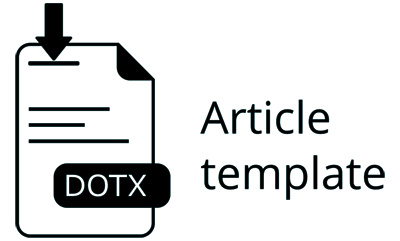APLIKASI IRIGASI TETES BERTINGKAT DENGAN TANAMAN CABE DI PERUMAHAN PADAT PENDUDUK KOTA MATARAM HULU
Abstract
This study aims to determine the ability of multilevel drip irrigation using a lateral pipe from a 12 mm Netafim (NTF) pipe and ½" PVC on soil media in polybags with variations of soil to compost 70%: 30%, 50%: 50%, 30%: 70%. Tests were carried out with variations in the depth of the water tower 220 cm, 120 cm, and 30 cm from the lateral drip pipe to the irrigation uniformity (CU), irrigation distribution and irrigation depth produced. The research was conducted on a residential yard measuring 1.5 m x 4 m x 2 m, the distance between the network levels was 1m and the tower height was 2.5 m. The results showed that drip irrigation with PVC and NTF pipes resulted in a deviation of irrigation volume at each level of the network of about 2 ml, with a decrease in the deviation of irrigation volume from the deviation of drip irrigation with NTF-level pipes of about 85%. Tests on NTF drip irrigation with a soil composition of 70% at various tank volumes, obtained a maximum irrigation depth of about 13 cm-20 cm and a minimum irrigation depth of 30% soil ranging from 5 cm-14 cm. For the NTF and PVC drip irrigation tests, the highest irrigation depth was obtained on 30% soil with a maximum irrigation depth of 10 cm-15 cm, while the minimum irrigation depth was obtained on 70% soil ranging from 6cm to 10cm. The average uniformity of PVC pipe multilevel drip irrigation and NTF was obtained at 95% with a more even distribution of irrigation water volume at each level.
References
Adhiguna, R. T., & Rejo, A. (2018). Teknologi Irigasi Tetes dalam Mengoptimalkan Efisiensi Penggunaan Air di Lahan Pertanian. Prosiding Seminar Nasional Hari Air Dunia 2018.
Idrus, M. (2013). Disain Irigasi Tetes Tipe Orifis Tanpa Pompa Untuk Tanaman Slada Secara Hidroponik Pada Rak-Rak Bertingkat. Jurnal Ilmiah Teknik Pertanian-TekTan, 5(1), 46–54.
Nakayama, F. S., & Bucks, D. A. (1986). Trickle irrigation for crop production. In Development in agricultural engineering 9. Elsevier.
Negara, I. D. G. J. (2008). Pengaruh Jarak Lubang Pipa Terhadap Keseragaman Aliran pada Sistem Irigasi Tetes Pipa Seri. Jurnal Rekayasa, 9(1).
Negara, I. D. G. J., Budianto, M. B., Supriyadi, A., & Saidah, H. (2020). Analisis Kebutuhan Air Tanaman Dengan Metode Caoli Pada Tanaman Tomat dengn Irigasi Tetes di lahan Kering Lombok Utara. GANEC SWARA, 14(1), 419–425. https://doi.org/10.35327/gara.v14i1.116
Negara, I. D. G. J., & Saidah, H. (2021). True drip Irrigation performance on discharge variation and distance of lateral pipes. Proceeding ICST, 363–371.
Negara, I. D. G. J., Saidah, H., Sulistiyono, H., Supriyadi, A., & Dwiasmoro, F. R. (2021). Analysis of The Effect of Transmission Pipe Slope to PVC Pipe Drip Irrigation Flow. The 2nd International Seminar on Civil and Environmental Engineering (2nd ISCEE) 2021, 6–8.
Negara, I. D. G. J., Saidah, H., Yasa, I. W., Hanifah, L., & Dewi, D. P. (2022). Analisis Kemampuan Sistem Irigasi Tetes Bertingkat dalam Pemberian Lengas Tanah pada Polybag. GANEC SWARA, 16(2), 1608–1615. https://doi.org/10.35327/gara.v16i2.326
Negara, I. D. G. J., Saidi, Y., & Putra, I. B. G. (2013). Pemanfaatan Energi Matahari Dalam Pemompaan Air Tanah Untuk Pengembangan Irigasi Tetes terpadu Di Daerah Aliran Sungai Lahan Kering Kabupaten Lombok Timur.
Negara, I. D. G. J., Saidi, Y., & Putra, I. B. G. (2014). Karakteristik Perubahan Lengas Tanah Pada Pemberian Irigasi Tetes Pipa Pvc Di Lahan Kering Pringgabaya Kabupaten Lombok Timur. Spektrum Sipil, 1(2), 179–189.
Negara, I. D. G. J., Sulistiyono, H., Supriyadi, A., Putra, I. B. G., & Yasa, I. W. (2022). Karakteristik Distribusi Volume dan Debit ALiran Irigasi Aktual Setiap SIstem Jaringan Irigasi Tetes pada Lahan Layanan Bertingkat. GANEC SWARA, 16(1), 1370–1377. https://doi.org/10.35327/gara.v16i1.275
Negara, I. D. G. J., & Suwardji. (2010). Pengaruh Irigasi Tetes terhadap Pembasahan Tanah di Lahan Kering Pasiran, Desa Akar Akar, Lombok Utara, NTB. Jurnal Spektrum Sipil, 1(1), 57–64.
Nurrahmawati, A. (2018). Efisiensi Air Irigasi Tetes di Desa Salut, Kabupaten Lombok Utara. Universitas Mataram.
Ridwan, D. (2013). Model jaringan irigasi tetes berbasis bahan lokal untuk pertanian lahan sempit. Jurnal Irigasi, 8(2), 90–98.
Triatmodjo, B. (2012). Hidrolika I. Beta Offset.
Widiastuti, I., & Wijayanto, D. S. (2018). Implementasi teknologi irigasi tetes pada budidaya tanaman buah naga. Jurnal Keteknikan Pertanian, 6(1), 1–8.
Witman, S. (2021). Penerapan Metode Irigasi Tetes Guna Mendukung Efisiensi Penggunaan Air di Lahan Kering. JURNAL TRITON, 12(1), 20–28. https://doi.org/10.47687/jt.v12i1.152
Yanto, Y., Tusi, A., & Triyono, S. (2014). Aplikasi Sistem Irigasi Tetes Pada Tanaman Kembang Kol (Brassica Oleracea Var. Botrytis L. Subvar. Cauliflora DC) dalam Greenhouse. Jurnal Teknik Pertanian Lampung, 3(1), 141–154.
Authors who publish with this journal agree to the following terms:
- Authors retain copyright and grant the journal right of first publication with the work simultaneously licensed under a Creative Commons Attribution License that allows others to share the work with an acknowledgement of the work's authorship and initial publication in this journal.
- Authors are able to enter into separate, additional contractual arrangements for the non-exclusive distribution of the journal's published version of the work (e.g., post it to an institutional repository or publish it in a book), with an acknowledgement of its initial publication in this journal.
- Authors are permitted and encouraged to post their work online (e.g., in institutional repositories or on their website) prior to and during the submission process, as it can lead to productive exchanges, as well as earlier and greater citation of published work (See The Effect of Open Access).
 Abstract viewed = 231 times
Abstract viewed = 231 times
 PDF downloaded = 723 times
PDF downloaded = 723 times










